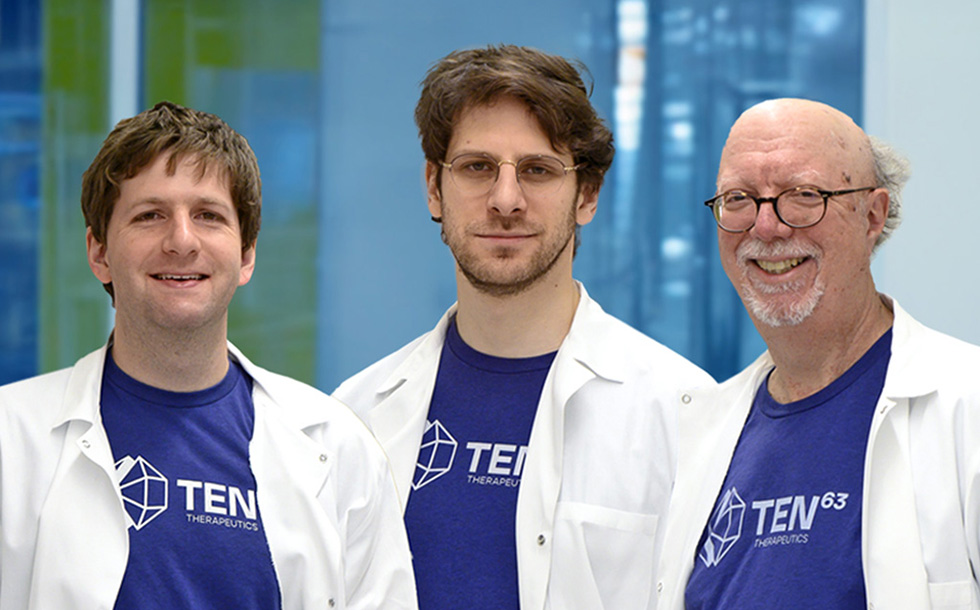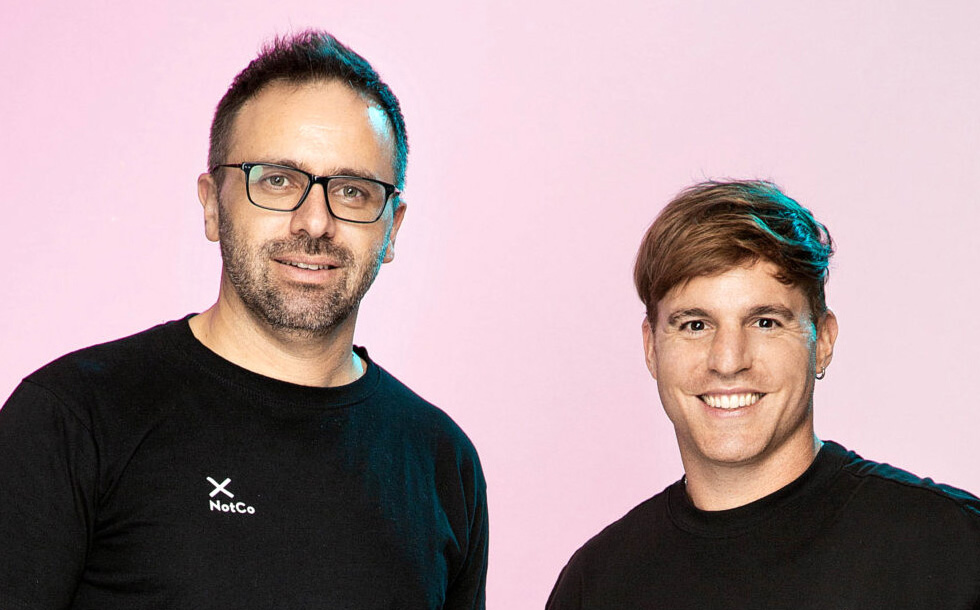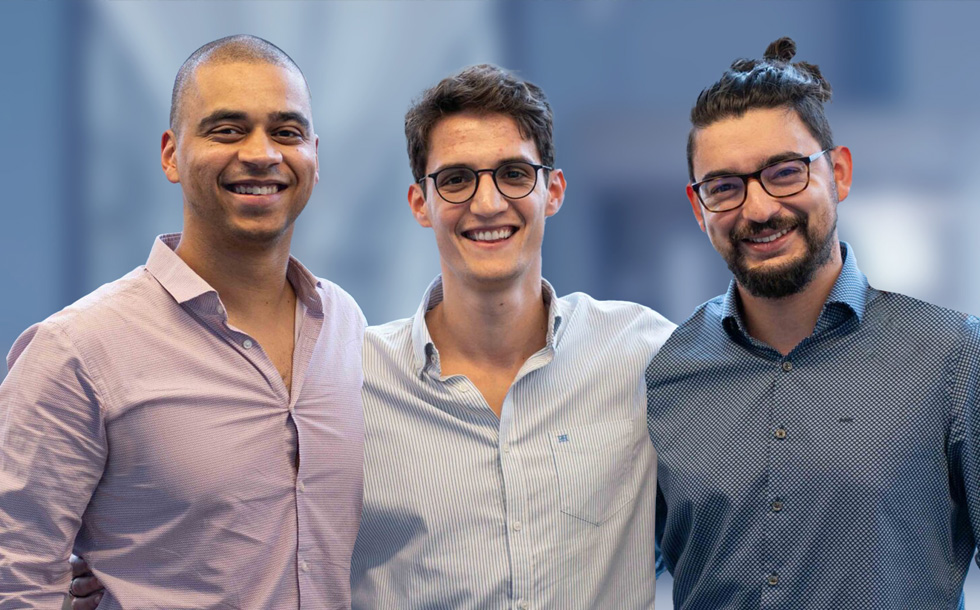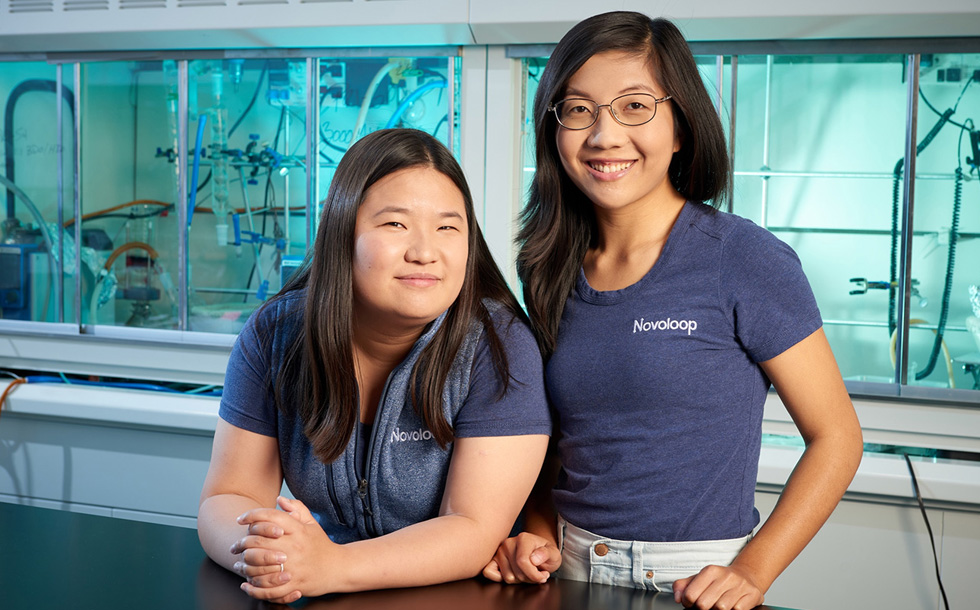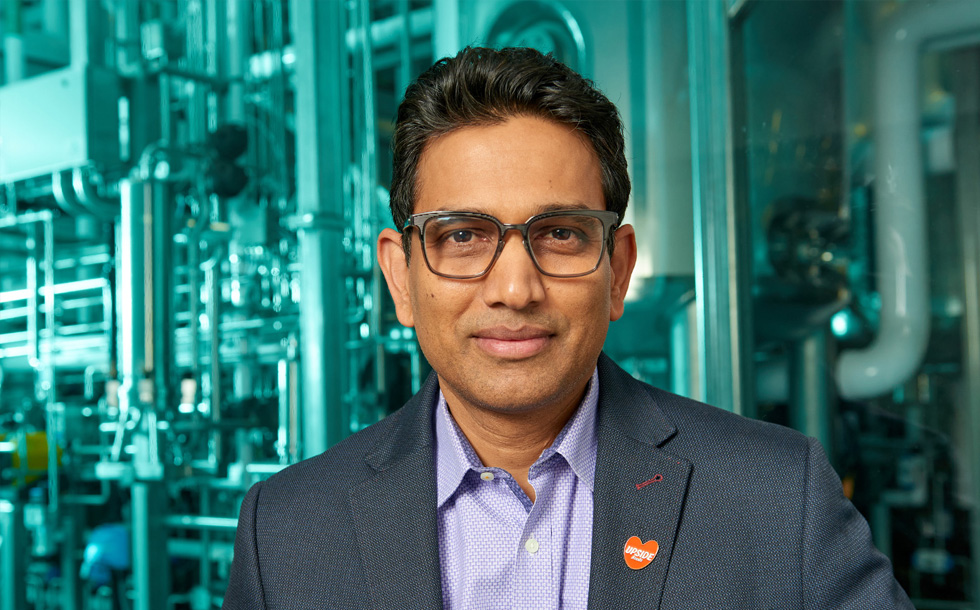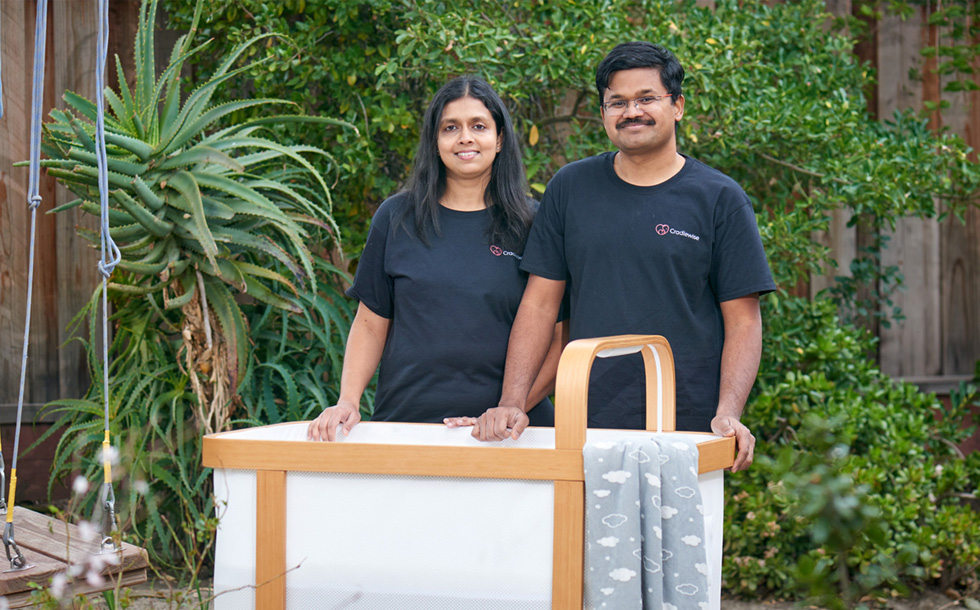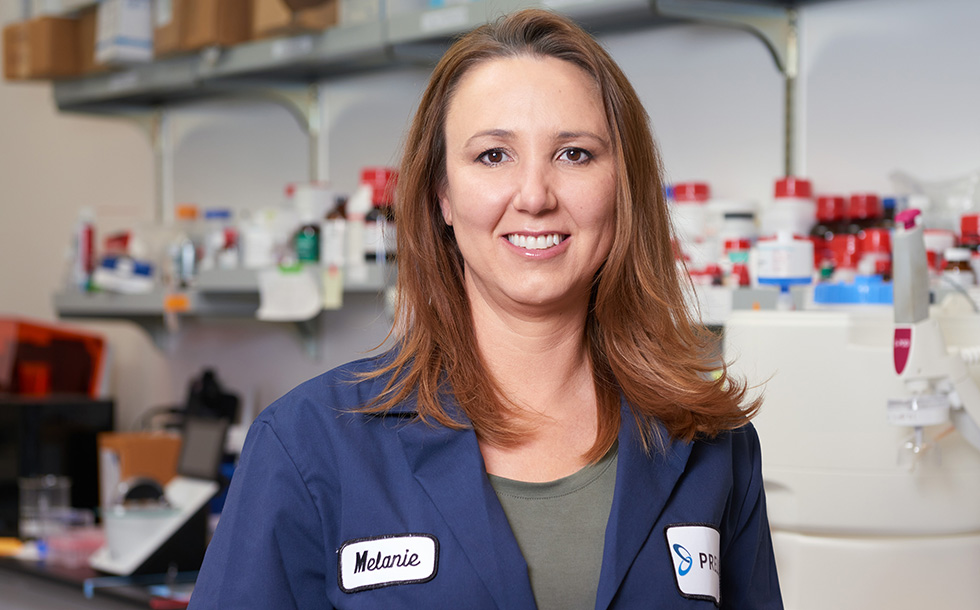In 2013, Beth Esponnette was in yet another meeting about whether to incinerate or donate surplus goods. This is a regular dilemma in the clothing industry because brands typically place orders with manufacturers 18 months before they would appear in stores. The result is overproduction that ends up adding CO2 to the atmosphere. With a carbon footprint already between 3 and 10% of global emissions, overproduction is something the fashion industry could hardly afford.
While her colleagues debated their disposal options, Beth says she spent the meeting wondering, “Why do we have this problem? Why did we make so many of these? Couldn’t we make clothing on demand when people need it?”
Beth’s answer to those questions is unspun, co-founded in 2017 with Walden Lam and Kevin Martin. After years of work, they have built a 3D weaving technology, Vega™, that can make a custom pair of pants in less than 10 minutes using a 3D scan taken with the customer’s smartphone. Vega enables clothing on-demand, with almost zero yarn waste, manufactured close to buyers instead of across the world. The technology even enables yarn to be reused and might unweave clothing one day. Hence, the name “unspun.”
Funded with $57 million from DCVC, Lowercarbon Capital, SOSV, Climate Capital, Sequoia, Fifty Years, and MVP Ventures, among others, unspun aims to eliminate 1% of global carbon emissions. That’s a remarkable ambition for a small firm, but they already have outsized partners, including retail giant Walmart. But can unspun really reduce global CO2 emissions by 371 millions metric tonnes per year by making garments to order?
Raised in Auburn, Maine, Beth is the daughter of medical professionals but the grandchild and great grandchild of long-haul truckers. Drawn to those blue-collar roots, Beth wanted to work with her hands, and fashion was her medium. “For the first five years that I got into the fashion and clothing industry, I think my parents saw it as a downgrade,” recalls Beth, who studied fiber science and apparel design at Cornell University.
Beth only began to question her career path after seeing the scale of waste in fashion. A staggering 10 to 30 percent of garments produced globally are never worn, according to trend forecasting firm WGSN. Instead, they are incinerated or go to landfills, sometimes to protect so-called “brand value” from excess inventory. Bloomberg estimates that 87% of all the fiber input for clothing eventually becomes ash or trash. A Nature editorial predicts that the world will buy 100 million tons of clothing in 2030, up from 60 million in 2022, which means the industry’s energy use and waste will only grow—unless something big changes.
When Beth saw a 3D printer for the first time in 2013, she started to think differently about the waste problem. If 3D printers existed, why not 3D weaving machines?
Later that year, Beth arrived at the Stanford school for an MFA, ready to change how the world manufactures clothing. After doing market research, Beth realized that the fit of jeans was a big market opportunity for a 3D weaving machine to solve. She just needed the right partners to do it.

While Beth was thinking heretical thoughts about clothing production, Walden Lam was earning his MBA at Stanford. Raised in Hong Kong, he grew up in the heyday of Chinese manufacturing. His family owned and operated a factory that made candles for box retailers in the US and Europe.
With his background in finance and consulting, Walden could have taken a traditional MBA path had he not received an unexpected email from Beth in 2015, just before graduation. “She sent out a blast email to the Stanford community,” recalls Walden. It was Beth’s pitch to potential co-founders.
At the time, “climate tech” or “deep tech” wasn’t a thing. Everyone at Stanford was working on the next Uber-for-fill-in-the-blank. Walden, however, knew the problems of mass manufacturing firsthand. He replied to Beth’s email blast. The two started to work together, but they needed income, so Beth took a tenure-track job at the University of Oregon, and Walden went to lululemon. “If I want to start a pants company, I might as well go to one of the most successful pants companies in the world to learn,” Walden remembers thinking.
“Our pitch to investors then was, hey, we want to start something in fashion, and not only that, but we also want to start with hardware.”
Walden Lam, Co-founder, unspun
2015 wasn’t an easy time to build a hardware startup. “Our pitch to investors then was, hey, we want to start something in fashion, and not only that, but we also want to start with hardware,” Walden explains. It didn’t land well with most VCs. However, when Walden was an MBA intern at IDEO in Shanghai, he met someone planning to leave the firm and join a startup program run by SOSV called HAX, which invested in hard tech companies a lot like unspun. Before Walden could reach out to Duncan Turner, though, unspun needed a prototype weaving machine.

When Kevin Martin graduated from the University of Colorado Boulder in 2016, he was ready to move on from his aerial photography business.
Kevin grew up in Colorado Springs “completely surrounded by airplane nerds” and was determined to become an Air Force pilot. He started with radio-controlled (RC) airplanes and eventually attached a GoPro, which led to an aerial photography business.
Near the end of high school, Kevin found out that many new Air Force pilots weren’t even flying planes—they mostly operated Predator drones remotely from Las Vegas, which didn’t interest him. He pivoted last-minute to study mechanical engineering at UC Boulder, and he started looking for a meaningful engineering project. He found one on AngelList.
“I still remember friends laughing at me being like, you’re gonna join a fashion company?”
Kevin Martin, Co-founder, unspun
Of all those who responded to unspun’s AngelList job posting, no one was better prepared than Kevin. The idea of cleaning up one of the world’s most wasteful and carbon intensive industries resonated with him. And unlike engineers with apparel manufacturing experience, he wasn’t saddled with assumptions about how it had to be done. Or, as Walden jokes, “We had no other compelling choice.”
“I still remember friends laughing at me being like, you’re gonna join a fashion company?” says Kevin. His wardrobe consisted of gray Converse shoes and black and gray T-shirts.
Thankfully, unspun didn’t need Kevin’s fashion sense. It needed him to prototype a 3D weaving machine to help secure a Small Business Innovation Research (SBIR) grant, which in turn would provide funding to spring his co-founders from their full-time jobs. For six months, Kevin worked on the SBIR grant, while Beth and Walden literally gave Kevin an allowance to live on.
Kevin needed to overcome several technical hurdles. First was how to take a 3D scan and translate it into measurements that traditional manufacturers could turn into a pair of custom jeans. Second was how to create a robotic, 3D weaving machine. The 3D knitting machines already in existence for sweaters required two hours to complete a garment, while a 3D weaving machine, on the other hand, could make the pants much faster. The difference between a knitting and a weaving machine? unspun gets that question a lot.
To build the software and hardware prototypes, Kevin offered to sponsor a capstone project for engineering students at his alma mater. Usually companies like Lockheed Martin and Boeing funded these projects, but the university gave unspun a discount. Kevin and his team of Boulder undergrads built a 3D weaving prototype. That led to winning a Phase 1 SBIR grant worth $225,000. One of the students, Brian Gormley, joined unspun as employee number one upon graduating in 2017.
With a prototype and SBIR grant in hand, Walden reconnected with Duncan Turner. The team applied for HAX—then based in Shenzhen—and was accepted.

In September 2017, the unspun crew arrived in Shenzhen ready to turn their clunky prototype into something more sophisticated. HAX connected them to the ecosystem of local suppliers that had everything they needed.
For HAX’s Demo Day in late 2017, the team showed up in the custom jeans they created and brought along their 3D weaving prototype. The investors liked what they saw. unspun raised additional pre-seed funding from SOSV, followed by a Phase II SBIR grant worth $750,000 and a $2.5 million pre-seed round in 2019 led by Fifty Years.
The funding gave unspun space to continue developing its 3D weaving machine while introducing fashion brands and consumers to custom-fit jeans. The team soon landed pilot programs with H&M brand Weekday and London-based PANGAIA. Their process relied on bulky 3D scanners until 2021, when unspun debuted a first smartphone app able to scan the body in seconds. That year culminated with a $7.5 million seed round, and in 2023, unspun scored again with a $14 million Series A led by Lowercarbon Capital. Then in July 2024, unspun raised $32 million in Series B funding led by tech VC firm DCVC, with participation from Lowercarbon, E12 Ventures, SOSV, and Decathlon, the world’s largest sporting goods retailer.

After a long period underwraps, unspun finally announced its Vega 3D weaving machine in 2023. An engineering marvel, Vega can weave a pair of pants in 10 minutes while only wasting 3% of the fiber compared to 10-15% in a typical cut-and-sew process. It also eliminates leg seams, leading to a stronger, lighter product. The vision is that customers will take a 3D body scan with their smartphone, choose or customize a pre-designed style, and tap order. The nearest Vega microfactory—the first of which will be built in Oakland, CA—will make and ship the item of clothing the same day. unspun expects to have over a thousand Vega machines in use around the world by 2030.
“It’s hard for us to appreciate what goes into products because of how separate production is from consumption. We really want to close that loop.”
Beth Esponnette, Co-founder, unspun
Walmart, the largest clothing retailer in the US, has recently signed a partnership with unspun to pilot this concept. The company will use Vega to make workwear chinos domestically—a significant stride towards localized manufacturing with lower transportation emissions and supply chain exposure.
All that’s pretty heady for three founders who set out to decarbonize fashion by disrupting just about everything in apparel manufacturing. But is their 1% goal truly in reach? A life cycle assessment (LCA) commissioned by unspun found that cotton pants woven by unspun’s Vega in a local market will consume 49% less energy and 39% less water compared to conventional manufacturing practices, taking waste, transportation, overproduction, and other factors into account.
“It’s hard for us to appreciate what goes into products because of how separate production is from consumption,” says Beth. “We really want to close that loop.”
By Richard Ellis
Photos by unspun

